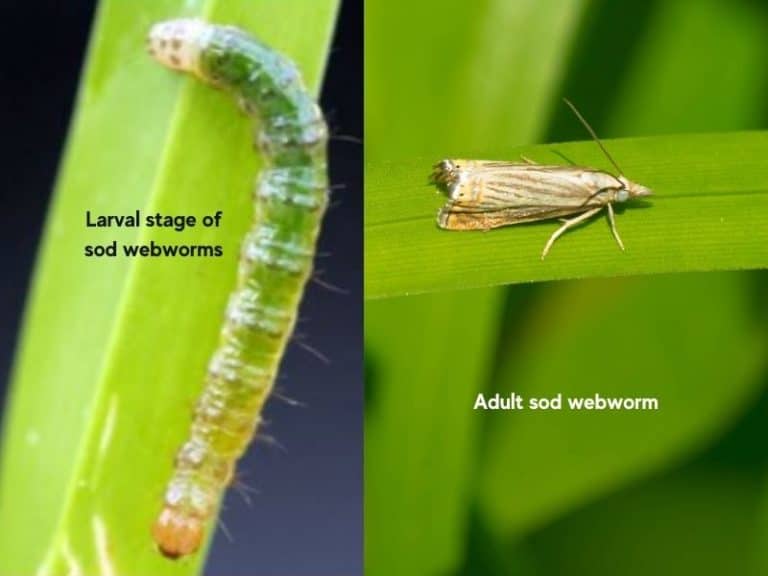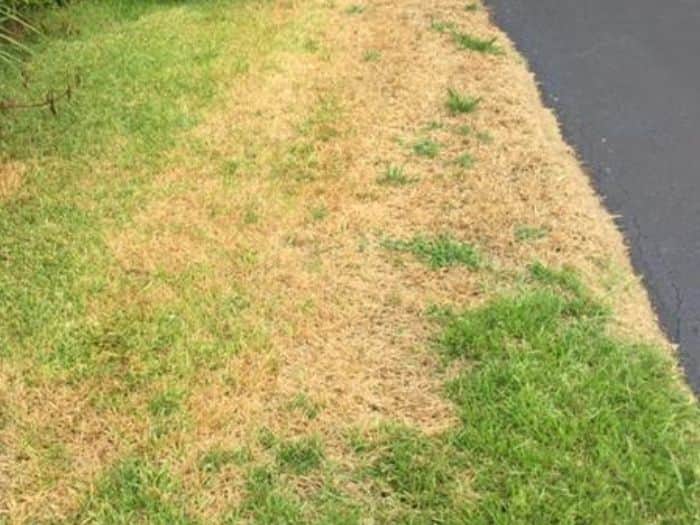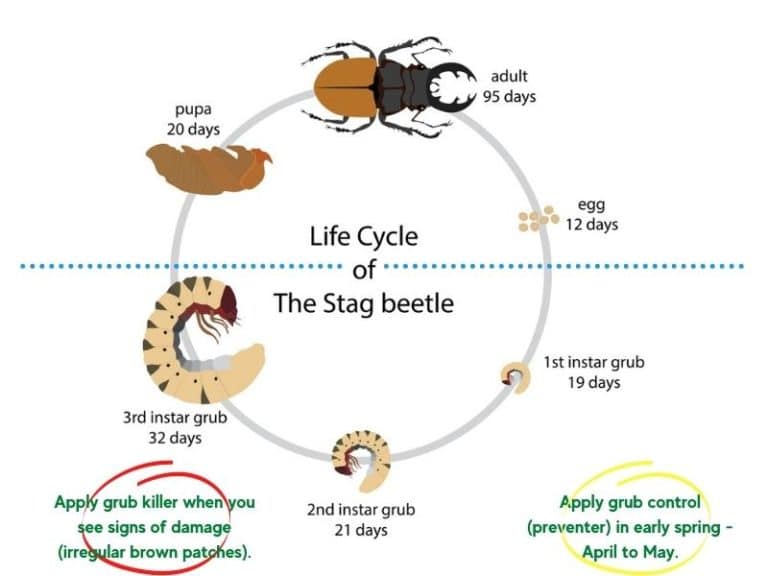How Do You Get Rid of Ants in Grass [Fixes that Work]
While ants are great for biological pest control, they’re not every homeowner’s favorite thing to look at, especially if they grow into large numbers. Moreover, they build mounds/ant hills that add to the aesthetic degradation of yards.
As ants build mounds in the grass, they dig through the soil, cutting through the turfgrass’ root systems in the process. Consequently, this may result in turf degradation and bare spots on your lawn.
Can you get rid of ants without killing grass?
Yes, you can eliminate ants on your lawn without killing grass using natural methods. In contrast to chemical pesticides which seep into the earth and contaminate the soil, organic ant control methods will enable you to get rid of ants on your lawn for good without having to put your turfgrass in harm’s way.
I’ve elaborated below each of these natural methods of permanent ant control without killing grass in the next section.
How to get rid of ants in your lawn
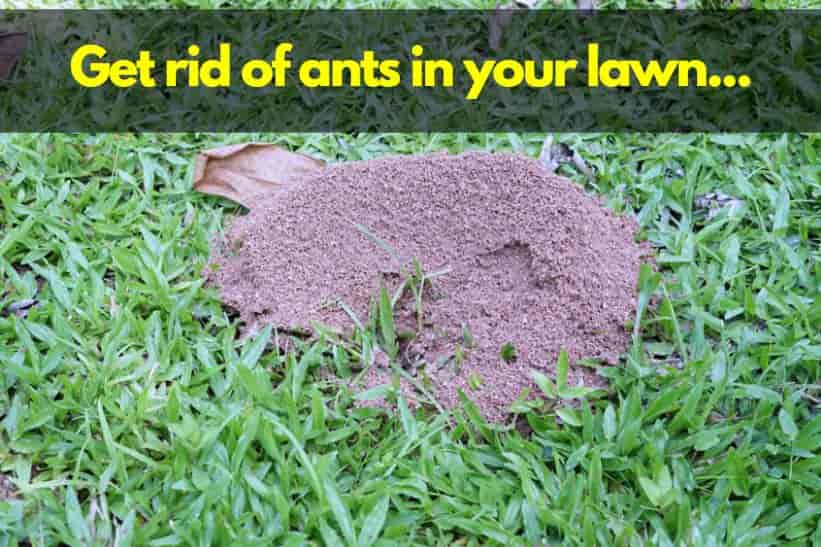
My preferred options for ant control include the use of natural ingredients that are safe for pets and humans since kits play on my lawn a lot. There are, however, chemical options such as ant killers for lawns that you can use to kill ants in your lawn.
Here’s how to get rid of ants in the grass:
1. Spread diatomaceous earth to kill ants
This substance works by penetrating into the exoskeleton of pests, consequently suffocating and dehydrating them. This significantly limits their mobility, and eventually, they die. To properly apply diatomaceous earth for ant control, follow the procedure outlined below:
- Wear the appropriate personal protective gear, including hand gloves and a face mask.
- Apply diatomaceous earth directly on sections of your lawn where you can notice high ant populations.
- Apply diatomaceous earth on ant nests, as these are where the ants live.
2. Vinegar solution for ant control
Vinegar is naturally acidic, and ants are intolerant of acidic conditions. This makes vinegar solution a great option for controlling ant infestations on your turf. You should- however- be careful to only pour vinegar solution directly onto the ant nests instead of spraying it around the lawn, as your turfgrass can also be burnt by such acidic solutions.
3. Baby powder ants
Baby powder clogs ants’ spiracles, depriving them of oxygen and suffocating them to death. Another good alternative to baby powder is baking powder, as both products have tiny particles that can penetrate and clog ants’ spiracles.
4. Use soap solution
Soapy water works by breaking down ants’ natural ability to resist water, consequently penetrating their exoskeletons and suffocating them. What’s more, soap also erases ant trails, thus disrupting their communication pathways and putting the entre ant colony in disarray. To get rid of ants for good using a soap solution, follow the procedure detailed below:
- Mix a bit of dish soap solution with water and transfer the mixture into a spraying bottle. For increased efficiency, you can add some canola or peppermint oil to the mixture.
- Next, spray the solution onto ant mounds, nests, ant trails, and any turfgrass sections where there seems to be lots of ants moving about. Since soapy water is eco-friendly, this method doesn’t pose any chances of harm to your turfgrass.
5. Cayenne or chili pepper natural ant killer
These two are natural ant repellents and will also wipe out ant trails. Simply pour some around ant hills and into ant nests in your yard and wait for the results. However, you’ll want to avoid exposing your pets to cayenne or chili pepper, as they can cause digestive irritability when ingested by these animals.
6. Deter the ants from your lawn
These are strategies that discourage ant infestations within your lawn. For instance, you can remove things that support ant growth from your lawn, including trash cans and compost piles. Another deterrence tactic is to always keep your turfgrass and lawn soil in good and healthy conditions, as ants thrive in poor-quality soil and turfs.
Other deterrence methods include sprinkling items that irritate or repel ants into far-off territories. These may include orange peelings, cucumber peelings, powdered cloves, and red pepper flakes.
How to get rid of ant hills in your lawn
The best way to get rid of ant hills in your lawn is to pour a lot of hot water into the entrance of the ants’ nests. This will kill all the ants inside the nest and stop them from forming any more hills in your yard. Be careful not to pour a lot of hot water on your grass as it will burn the foliage and leave your lawn with brown patches.
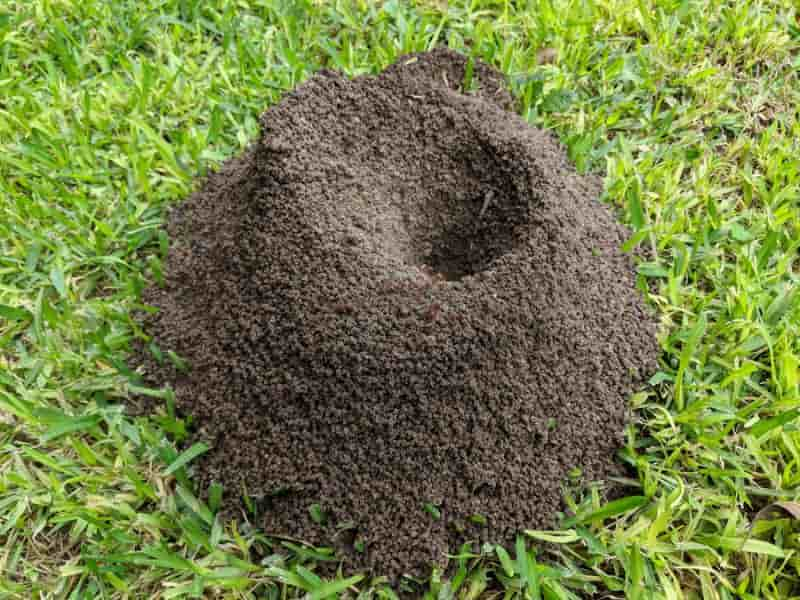
To effectively get rid of an ant hill, you first off have to properly understand its structure. The ant hill itself doesn’t actually house these insects, as it’s simply a mound of soil particles that worker ants pile at the nest’s entrance as they dig networks of underground tunnels.
Therefore, if you try to address the issue by simply getting rid of the visible pile of soil, you’ll most likely end up frustrated once the ant hill crops back up again later on.
What type of ants are in your lawn?
Being one of the most common insects, you’ve probably seen ants at home before. Yet, several different ant species can invade your lawn grass, with colors ranging from black and brown to red and yellow. Despite these body color differences, several physical similarities still make it easy to identify that the pests on your turfgrass are, indeed, ants.
For starters, adult ants are typically narrow-shaped, with three body sections: head, thorax, and abdomen. A narrow constriction separates the abdomen from the thorax. Also, the body size could fall anywhere between 1/16th– ¾ of an inch, with size variations dependent on the particular ant species.
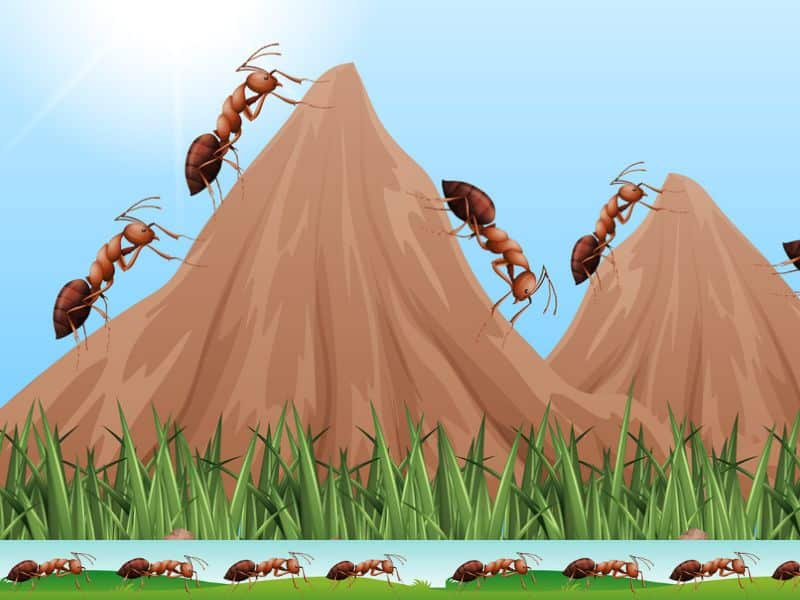
You can also identify an ant infestation in your yard by identifying their larvae during summer. To do so, dig underground into one of the ant nests and observe for white-colored organisms with a tapering head-to-tail kind of movement.
That being said, two ant species have been proven more common on turfgrass than any other ant species. These include field ants and cornfield ants. You can easily identify field ants by their black color and sizeable ant hills, typically about two feet in diameter. Cornfield ants- meanwhile- are significantly smaller and brown in color.
References
- Dr. Pat Vittum, University of Massachusettes, UMass Extension Turf Program: Contorlling Ants in Lawns
- University of Nebraska, DEPARTMENT OF ENTOMOLOGY: Turfgrass Entomology (ants)
- GREGORY HOOVER, Pennsylvania State University Extension: Ants in Home Lawns

